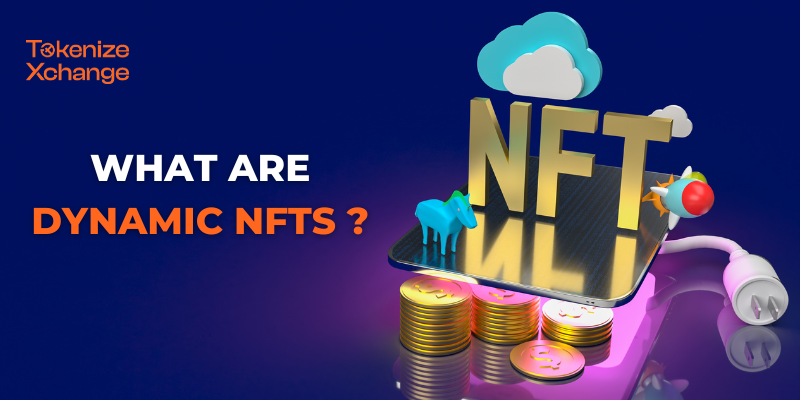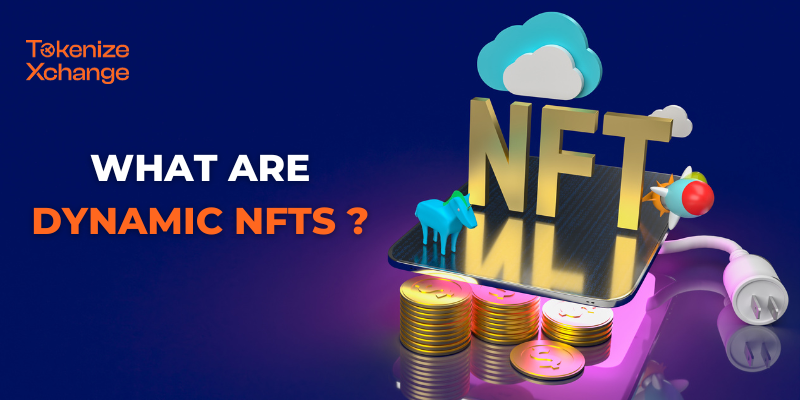
Since the inception of blockchain technology, Non-Fungible Tokens (NFTs) have commanded considerable attention in recent years. NFTs represent unique digital assets that are indivisible and cannot be exchanged on a one-to-one basis, unlike traditional cryptocurrencies such as Bitcoin or Ethereum. As blockchain technology continues to advance, a new era of innovation has dawned with the advent of dynamic NFTs.
These dynamic NFTs go beyond the static realm, embedding interactivity, programmability, and real-time elements into digital art, thereby reshaping the way we perceive and engage with artistic creations.
What are Dynamic NFTs (dNFT)?
The emergence of dynamic NFTs marks a natural progression from the limitations posed by static NFTs. Initially, static NFTs introduced a revolutionary concept of ownership and scarcity in the digital realm. However, as creators and collectors explored their potential, it became evident that static NFTs lacked the flexibility to reflect real-world changes or incorporate evolving narratives. This led to the innovation of dynamic NFTs. By allowing NFTs to evolve, respond to external data, and trigger changes based on certain conditions, dynamic NFTs address the desire for a more engaging and immersive ownership experience. This transition from static to dynamic NFTs can be seen as a response to the need for NFTs to be more than just static representations, offering a new dimension of interactivity, utility, and ongoing value for both creators and collectors alike.
In short, dynamic NFTs are non-fungible tokens that possess the capability to change and adapt based on various factors and conditions, setting them apart from static NFTs that remain unchanged after creation.
How do dNFTs Work?
The underlying technology driving dynamic NFTs is smart contracts, which play a crucial role in their evolution. These contracts enable the growth of dynamic NFTs by allowing them to use calculations from both inside and outside the blockchain. Here’s how it works:
- A user requests a specific dynamic NFT.
- The smart contract begins by searching for relevant information stored on the blockchain.
- If the needed information isn’t on the blockchain, the smart contract consults an oracle—an external data source—for additional details.
- Based on the collected data, the smart contract then provides the user with one or more pieces of media that might change over time.
In essence, smart contracts act as the bridge between on-chain and off-chain data, enabling dynamic NFTs to adapt and transform. This technology empowers NFTs to respond to changing conditions, making decisions about whether to modify the NFT’s attributes and updating its metadata accordingly.
In summary, blockchain’s evolution has introduced captivating Non-Fungible Tokens (NFTs) that redefine ownership. Unlike conventional cryptocurrencies, NFTs represent unique, indivisible digital assets. Dynamic NFTs surpass static ones by infusing real-time elements into digital art, altering how we engage with creativity. As an evolution from static NFTs, dynamics use smart contracts to adapt based on real-world data, offering interactive and immersive experiences. This journey from static to dynamic highlights creative innovation in the NFT space.
